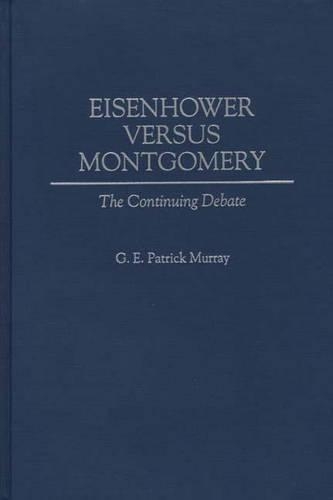
Eisenhower Versus Montgomery: The Continuing Debate
(Hardback)
Publishing Details
Eisenhower Versus Montgomery: The Continuing Debate
By (Author) G E P Murray
Bloomsbury Publishing PLC
Praeger Publishers Inc
30th November 1996
United States
Classifications
Tertiary Education
Non Fiction
Second World War
Modern warfare
History of the Americas
Warfare and defence
940.5421
Physical Properties
Hardback
224
Width 156mm, Height 235mm
510g
Description
This text examines the postwar memoir fight over the broad front versus the single thrust strategy, the Allied advance on the Rhine, and the British call for a ground-forces commander other than General Eisenhower. It traces the argument in the postwar memoirs from 1946 through 1968 as well as the official histories of the United States, Britain and Canada to see what the documents really said. What were men willing to say, what did they feel that they had to cover up Field Marshal Montgomery was deeply chagrined that he had only one army group to command when he thought himself the most professional commander in northwest Europe. Montgomery had little grasp of the intricacies of politics and could not understand that American public opinion made it impossible for Eisenhower to name him ground-forces commander. During the Battle of the Bulge the US President and Chief of Staff settled the issue in Eisenhower's favour.
Reviews
"Eisenhower versus Montgomery is...both useful and refreshing....Murray's book provides a valuable introduction to the competing strategies. For the general reader, this volume cuts to the heart of the debates, clearly illuminating the logistical, political, and military limits which inevitably led to Eisenhower's "broad front" strategy. For the advanced student, this work is useful for its analysis of many of the critical authors such as Wilmot or Nigel Hamilton....[A] gem of a book for any interested in the roots of the allies' victory over Germany."-Military and Naval History Journal
Eisenhower versus Montgomery is...both useful and refreshing....Murray's book provides a valuable introduction to the competing strategies. For the general reader, this volume cuts to the heart of the debates, clearly illuminating the logistical, political, and military limits which inevitably led to Eisenhower's "broad front" strategy. For the advanced student, this work is useful for its analysis of many of the critical authors such as Wilmot or Nigel Hamilton....[A] gem of a book for any interested in the roots of the allies' victory over Germany.-Military and Naval History Journal
Author Bio
G. E. PATRICK MURRAY is Professor of History at Valley Forge Military College.
